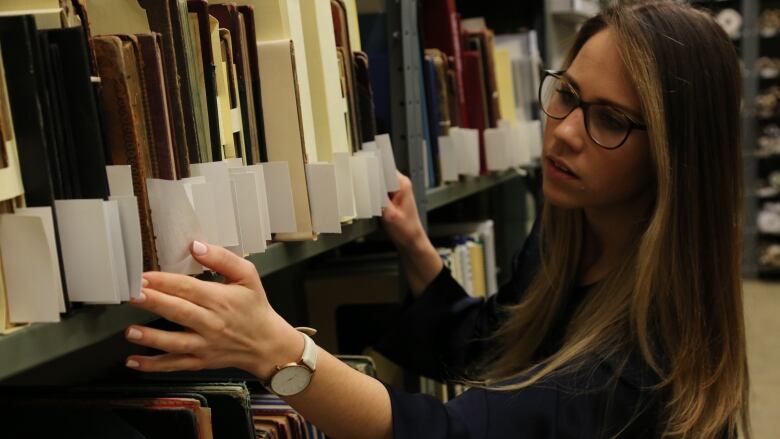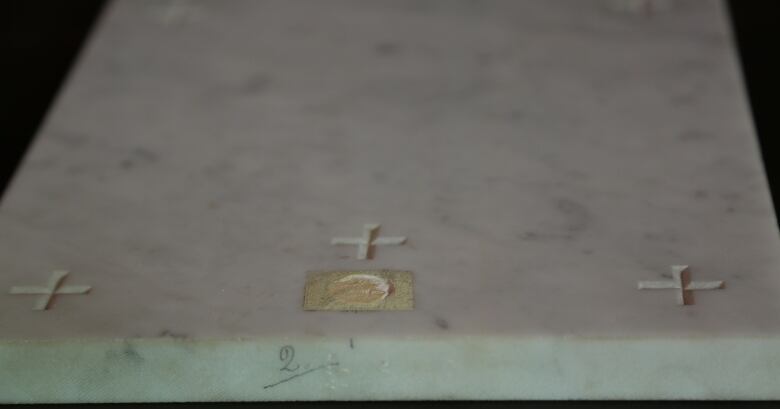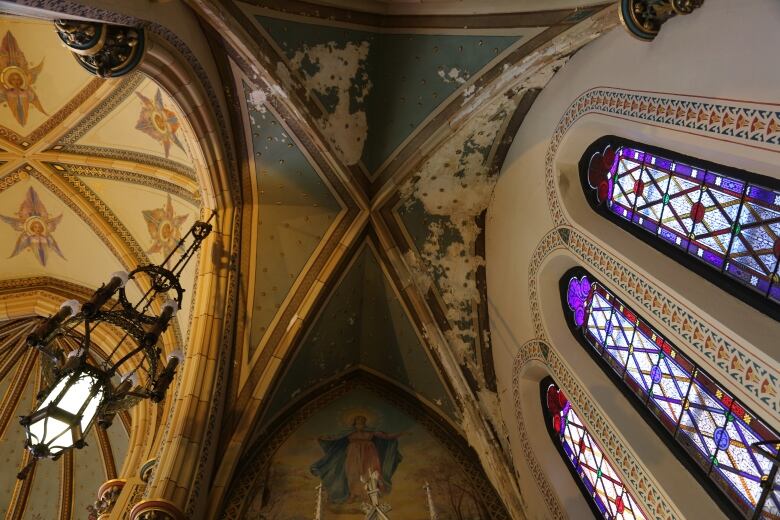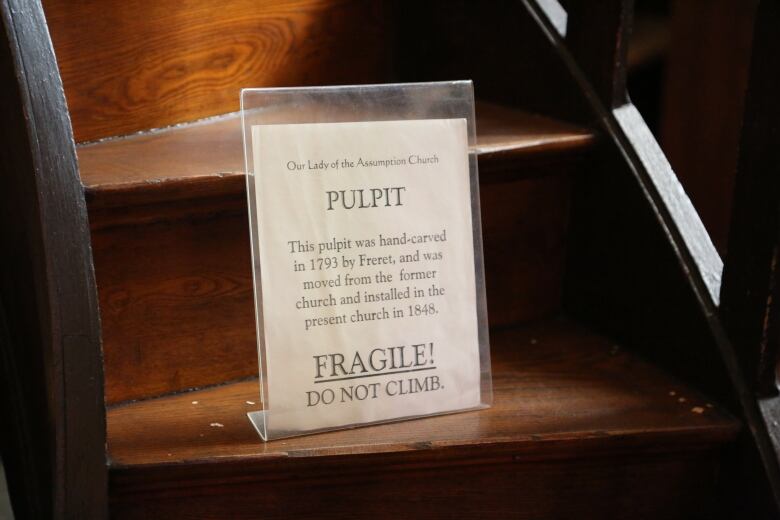Assumption Church holds many of Canada's oldest Catholic relics
Relics are in plain sight but they are small and not obvious unless you know what to look for

Most parishioners at Assumption Church in Windsor probably never knew there could be pieces of human beings encased in stone in plain sight.
The Catholic church shut down in 2014 after being in operation for 170 years, but it was built at a time when it was common to include relics somewhere in the altar areas.
In Assumption's case, there are three relics. The church doesn't know exactly who the people were or whether the relics are pieces of bones, teeth, hair or perhaps something that simply touched a saint.
They would have been brought from Europe at some point in the past and embedded in a small square concrete patch carved out of a marble slab. One is at the front of the church and the other two are found on either side of the main altar.

Though staff from the diocese doesn't know who they belonged to, they could find out but it would take some digging.
All the records are kept by the Roman Catholic Diocese of London, Ont. along with a rich cache of historical documents some of the oldest Canadian Catholic history west of Montreal.
Inside a vault in London are blueprints of churches, relics, records of bishops, sacramental registers, vintage priest clothing and a parish register of Assumption that dates back to 1760.

"Assumption has a big long history, not just for Windsor, but it's the Mother Church of Ontario," said Diocese archivist Debra Majer.
Church records predate Canada's
Many of the records, including Assumption's, predate any government records, and the information looks as old as it is they do do not have digital records.
Actually, even from modern times. The Church records information the same way it has 500 years ago.
"When we record things like baptismal records, when a marriage occurs, we write down the exact same information, the exact same way that we did it, handwritten into books like this," said archives assistant Lizz Birchall.

In the archive, they have records from 1767, which is 100 years before Canada began their own official census records.
"We can use these as public records because of the validity of how we do it," she said.
Reliquaries packed with relics
In Windsor, it's not just Assumption that contains relics. Any Catholic church in the area built before the 1960s may still house relics.
Not only that, there were relics at the Religious Hospitallers of St. Joseph, a convent which was once attached to Hotel Dieu Grace Hospital, now the Ouellette campus of the Windsor Regional Hospital. Those relics are now in London in two reliquaries (ornate boxes) inside the Diocese's vault.

One is from 1888. The thick golden frame has a red matting and the inside is shaped like a cross and filled with relics and the names of the saints who are inside.
"This one has a number of different saints in it. We have some less known, some more well known," Birchall said. "St. Francis of Assisi is in here, St. Augustine, St. Vincent de Paul," she said.
The second has even more relics. The reliquary is in great condition, but the seal which provides its authenticity is broken.
"All around the perimeter, and all within here and the window," Birchall said. "These would be first-class relics. Very tiny. All fragments of bones, placed around here and all of the names are under them so we know who they are."












_(720p).jpg)


 OFFICIAL HD MUSIC VIDEO.jpg)
.jpg)



























































































